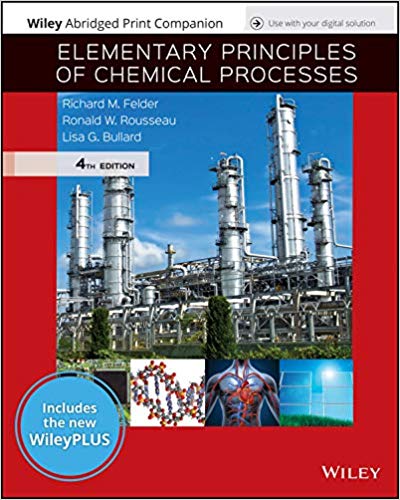The lower flammability limit (LFL) and the upper flammability limit (UFL) of propane in air at 1
Question:
The lower flammability limit (LFL) and the upper flammability limit (UFL) of propane in air at 1 atm are, respectively, 2.3 mole% C3H8 and 9.5 mole% C3H8. If the mole percent of propane in a propane-air mixture is between 2.3% and 9.5%, the gas mixture will burn explosively if exposed to a flame or spark; if the percentage is outside these limits, the mixture is safe-a match may burn in it but the flame will not spread. If the percentage of propane is below the LFL, the mixture is said to be too lean to ignite; if it is above the UFL, the mixture is too rich to ignite.
(a) Which would be safer to release into the atmosphere-a fuel-air mixture that is too lean or too rich to ignite? Explain.
(b) A mixture of propane in air containing 4.03 mole% C3H8 is fed to a combustion furnace. If there is a problem in the furnace, the mixture is diluted with a stream of pure air to make sure that it cannot accidentally ignite. If propane enters the furnace at a rate of 150 mol C3H8/s in the original fuel-air mixture, what is the minimum molar flow rate of the diluting air?
(c) The actual diluting air molar flow rate is specified to be 130% of the minimum value. Assuming the fuel mixture (4.03 mole% C3H8) enters the furnace at the same rate as in Part (b) at 125°C and 131 kPa and the diluting air enters at 25°C and 110 kPa, calculate the ratio (m3 diluting air./ .m3 fuel gas) and the mole percent of propane in the diluted mixture.
(d) Give several possible reasons for feeding air at a value greater than the calculated minimum rate.
Step by Step Answer:

Elementary Principles of Chemical Processes
ISBN: 978-1119498759
4th edition
Authors: Richard M. Felder, Ronald W. Rousseau, Lisa G. Bullard





